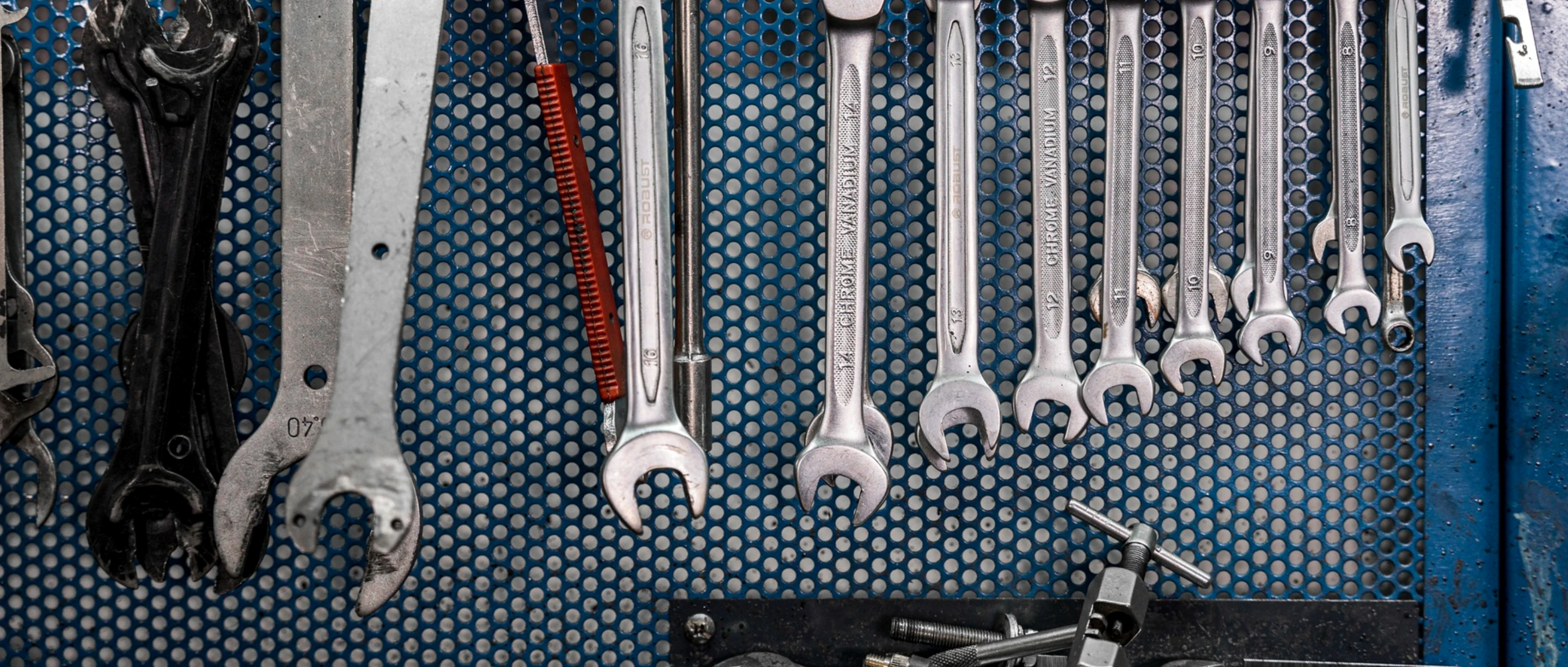Archive for December 2020A Non-Starter (Alternator Problems in Cold Weather)Posted December 27, 2020 7:40 AMAs the temperatures dip, we all know there could be problems starting our vehicles. After all, batteries can grow old and not hold a charge as well as when they were newer. Or starters can go bad. But there's one more component to keep an especially sharp eye on during winter: your alternator. The alternator is sort of like a small generator. It sends power out to various parts in your vehicle that need electricity. That includes the battery, which needs charging to keep its power topped off. The alternator creates electricity by taking mechanical energy from the engine and turning it into electricity. It is connected to the engine by belts and pulleys. In cold weather, the material the belt is made from is less flexible than it is in warm weather. That means it may not be turning the pulleys as effectively since it doesn't have the same grip. Also, when it's colder, lubricants, including the engine oil, are a little stiffer and parts just don't move like they do when the weather's warmer. With that extra strain, sometimes it takes the alternator longer to recharge the battery. That, in turn, may leave the battery a little less power to start the engine when it's cold. You may have a warning light on your instrument panel that looks like a battery. If it lights up or if you notice your headlights flickering or not shining quite as brightly as they usually do, it could mean a weak alternator. But it also could be an aging battery, corroded battery terminals, a loose belt or another charging system part. Yes, it's complicated. Pinpointing the cause involves testing the battery and charging system with diagnostic equipment. If it does turn out to be an alternator, there are options besides replacing it with a brand new, original equipment part. Ask your service advisor for recommendations. Obviously, you want your vehicle to start reliably, especially in cold weather. Take care of your charging system and it will take care of you. Car Doc On The Island Some New Boots (Suspension Maintenance)Posted December 20, 2020 11:40 AMThere are some boots that don't come in a shoe box and aren't worn on your feet. They are called axle or CV boots, and they can be important parts for many vehicles. That CV stands for constant velocity. CV axles are mainly used in front-wheel drive and all-wheel drive vehicles. They're also used in some rear-wheel drive vehicles with independent suspensions. They have two CV joints, one inner and one outer, placed between the axle and the drive wheels. That way the vehicle's engine power can drive the wheels, no matter what angle they are. They also adjust for the different speeds wheels turn as they go around corners. Because roads are full of all sorts of hazards (dirt, oil, water, grime), these CV joints need to be protected. They also have grease in them to keep the bearings moving smoothly. That's the job of the rubber boots that are supposed to keep that debris out. These CV or axle boots are made of rubber or plastic and usually last a long time without any problem. But sometimes they fail, either from being hit by debris or age causing the rubber or plastic to deteriorate. That can allow the grease to leak out of the joint and the moisture to get in. And that's where the trouble is. So it's important to have a vehicle's CV boots checked periodically, especially when they begin to have more than 100,000 miles/160,000 kilometers on them. A technician inspects them for tears or cracks. Sometimes if the problems are found early enough, the boots can be replaced and the joints can be re-packed with grease. But sometimes the CV joint can wear out even though the boot is intact. When the CV joint fails, you might hear a grinding, humming or clicking noise and feel vibration. Some of these can be difficult to access for service, so many service advisors will recommend replacing the joints and boots at the same time. Just remember, new CV boots won't make a fashion statement, but they will keep your vehicle going down the road for years to come. Car Doc On The Island What's in a Number? (What Tire Numbers Mean)Posted December 13, 2020 9:51 AMYou've probably never paid much attention to the writing on the sides of your tires, but they contain a wealth of information. There's a long combination of letters and numbers that can tell you a whole lot about what tires your vehicle was designed to be riding on. Let's check out this example found on an SUV: P245/70R17 108T. The first letter, P, means it's intended for passenger vehicles. If there's no letter, it means it's a metric tire. If there's an LT at the beginning or end that means a tire designed for light trucks. Moving on to our example, the 245 shows how wide the tire is in millimeters from sidewall to sidewall. The number that follows in our example, 70, means the height of the tire is 70% of its width. The letter after that in our example, R, describes the type of tire (on this vehicle, radial). Following that is the diameter in inches, in our SUV example, 17 inches. How much load the tires' sidewalls are designed to take is what that next number is all about (108 in our example). The higher the load index, the more weight the sidewalls can take. And the last letter is the speed rating of the tire, in our example, T. The further along in the alphabet that letter is, the higher its speed rating. So now you know what those letters and numbers mean. But why are they important? When you are getting ready to replace those tires, those numbers are telling you what the original equipment was when your vehicle was new. Sticking with the same rated tires is always a good idea. If you don't know what you're doing, trying different sized tires and wheels can cause real issues when it comes to performance and safety, considering all the computerized systems now found on vehicles. When in doubt, consult your service advisor when it comes to buying new tires. He or she knows what those tire numbers and letters mean… and a whole lot more. Car Doc On The Island | ||
SearchArchiveApril 2016 (16)May 2016 (5) June 2016 (4) July 2016 (4) August 2016 (5) September 2016 (4) October 2016 (5) November 2016 (4) December 2016 (4) January 2017 (5) February 2017 (4) March 2017 (4) April 2017 (5) May 2017 (4) June 2017 (4) July 2017 (5) August 2017 (4) September 2017 (3) October 2017 (5) November 2017 (4) December 2017 (3) January 2018 (5) February 2018 (4) March 2018 (4) April 2018 (5) May 2018 (4) June 2018 (4) July 2018 (5) August 2018 (4) September 2018 (5) October 2018 (4) November 2018 (4) December 2018 (5) January 2019 (5) February 2019 (4) March 2019 (5) April 2019 (4) May 2019 (4) June 2019 (5) July 2019 (4) August 2019 (4) September 2019 (5) October 2019 (4) November 2019 (4) December 2019 (5) January 2020 (5) February 2020 (4) March 2020 (5) April 2020 (4) May 2020 (5) June 2020 (4) July 2020 (4) August 2020 (5) September 2020 (4) October 2020 (4) November 2020 (5) December 2020 (4) January 2021 (6) February 2021 (4) March 2021 (4) April 2021 (4) May 2021 (5) June 2021 (4) July 2021 (4) August 2021 (5) September 2021 (4) October 2021 (5) November 2021 (4) December 2021 (4) January 2022 (6) February 2022 (4) March 2022 (4) April 2022 (4) May 2022 (5) June 2022 (4) July 2022 (5) August 2022 (4) September 2022 (4) October 2022 (5) November 2022 (4) December 2022 (4) January 2023 (5) February 2023 (4) March 2023 (4) April 2023 (5) May 2023 (4) June 2023 (4) July 2023 (5) August 2023 (4) September 2023 (4) October 2023 (5) November 2023 (4) December 2023 (5) January 2024 (5) February 2024 (4) March 2024 (5) April 2024 (4) May 2024 (4) June 2024 (5) July 2024 (4) August 2024 (4) September 2024 (5) October 2024 (4) November 2024 (4) December 2024 (5) January 2025 (4) February 2025 (4) March 2025 (4) | CategoriesKeys to a long lasting vehicle (2)Timing Belt (2)Fuel Economy (8)Brakes (12)Fluids (7)Maintenance (8)Air Conditioning (6)Safety (1)Exhaust (6)Service Standards (3)Steering (8)What Customers Should Know (67)Dashboard (1)Fuel System (4)Cooling System (5)Alternator (5)Battery (9)Auto Safety (5)Windshield Wipers (2)Service Intervals (2)Wheel Bearings (1)Customer Detective Work (1)Shocks & Struts (2)Tires and Wheels (2)Tire Rotation and Balancing (3)Alignment (4)Winter Tires (1)Tires (8)Suspension (1)Inspection (3)TPMS (2)Drive Train (3)Automotive News (2)Safe Driving (1)Fuel Saving Tip: Slow Down (1)Winter Prep (3)Check Engine Light (2)Oil Change (4)Brake Service (2)Differential Service (1)Spark Plugs (1)Older Vehicles (1)Headlamps (1)Transmission (4)Transfer Case Service (1)Engine Air Filter (1)Cabin Air Filter (1)Fuel Pump (1) | |

AUTONET TV

Testimonials

My truck broke down last week and after calling around Car Doc was the one that was able to get it done sooner. From the minute I called till the day that I pick my car up, they kept me informed they were very professional, respectful and courteous. I will definitely be using them going forward.~ Robert Serena, 03/25/2025










